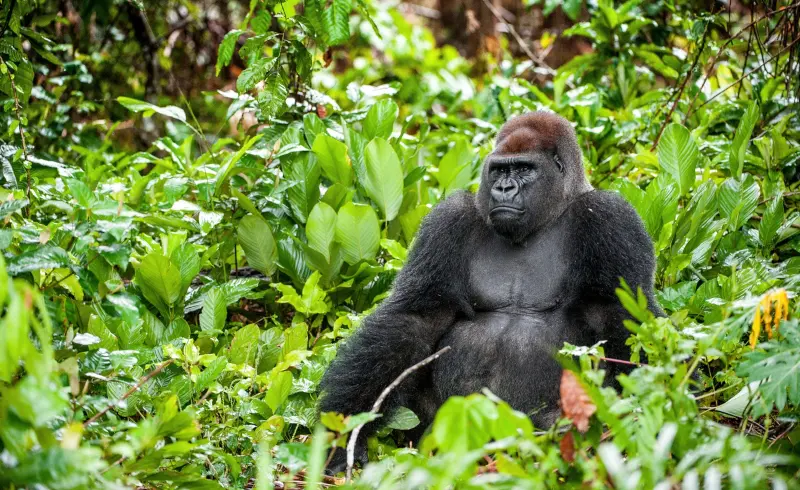Once considered hunted to extinction, the Cross River Gorilla, “rediscovered” in the 1980s, is the planet’s most endangered subspecies of gorilla and Africa’s rarest ape.
December 26, 2021 by Mongabay

By Gianluca Cerullo
Cross River gorillas are Africa’s rarest and most endangered ape, once thought to have already been driven to extinction.
Camera traps have emerged as a critical tool for monitoring the health and population sizes of the subspecies.
Recent images have shown multiple young gorillas, which conservationists take as a sign that protection measures are working, and which have also helped raise awareness and funding for Cross River gorilla conservation.
MBE MOUNTAINS, Nigeria — Three hop-like steps and a leap, and suddenly Jacob Osang, an eco-guard with the Wildlife Conservation Society (WCS), appears to be levitating above the rainforest floor. With nimble-footed ease, he darts across a moss-covered trunk that bridges a rock-strewn gorge like a fractured bone. But if Osang is fazed by the idea that a chunk of rotting cellulose is all that stands between him and a 15-meter (50-foot) drop, he doesn’t show it.
“It’s my job!” he grins.
Osang calls this part of the forest Natural Bridge, and it’s clear why. The fall of this mega tree, now Osang’s favorite camera-trapping site, has rewired the circuitry of the rainforest. In life, the 40-meter (130-foot) hardwood would have pierced the canopy of Mbe Mountains Community Forest in southeastern Nigeria. For perhaps hundreds of years, its sprawling roots would have been a playground for duikers and porcupines, its gnarled branches a climbing frame for mona and putty-nosed monkeys. In its horizontal days, the fallen sentinel now serves a different purpose: It has become a wildlife walkway, a shortcut across the rugged landscape of the Cross River rainforest.
Osang’s camera trap images, set as part of WCS efforts to monitor Mbe Mountains’ unique fauna, have already revealed that Natural Bridge is a highway for hyraxes and a channel for threatened Nigeria-Cameroon chimpanzees. But Osang thinks it might be something even more special: a causeway for the Cross River gorilla (Gorilla gorilla diehli).
Once considered hunted to extinction, the Cross River Gorilla, “rediscovered” in the 1980s, is the planet’s most endangered subspecies of gorilla and Africa’s rarest ape. Experts estimate that its global population totals fewer than 300 individuals, with a transboundary range spanning the rainforest-blanketed borderlands of Nigeria and Cameroon.
All told, some 100 Cross River gorillas are thought to call Nigeria home. About a third of them reside in Osang’s patrol zone in Mbe Mountains, an 8,500-hectare (21,000-acre) community-owned forest corridor connecting two splotches of gorilla habitat. But these numbers are best guesses. And as conservationists’ efforts to protect this genetically distinct ape have redoubled, camera traps have emerged as a critical tool for monitoring the health and population sizes of the Cross River gorilla.
“It used to be that you only saw signs of Cross River gorilla if you spent days or sometimes weeks walking in the forest,” Osang says. “Now camera traps can tell us where the gorillas are and what they are doing.”
Gorillas through the lens
Camera traps have revolutionized the field of wildlife conservation, providing unprecedented insights into the secret lives of some of Earth’s rarest fauna. The motion-triggered devices have been the unsung hero behind everything from a new species of elephant shrew discovered in the Udzungwa Mountains of Tanzania, to the first-ever video of the world’s rarest rhino, the Javan rhino, romping in a mud wallow.
The Cross River gorillas’ own camera trap moment came in July 2020, when news outlets worldwide shared a series of momentous photographs captured by one of Osang’s traps in Mbe Mountains. These showed the first-ever photographs of a Cross River gorilla troop, including shots of several baby and adolescent gorillas.
No comments:
Post a Comment